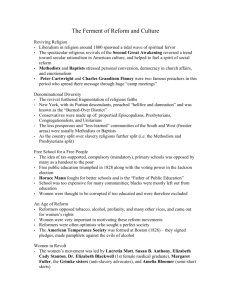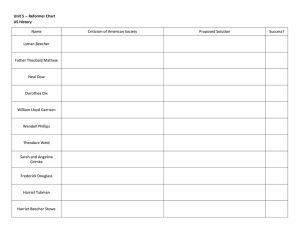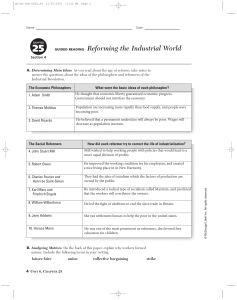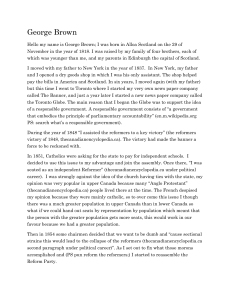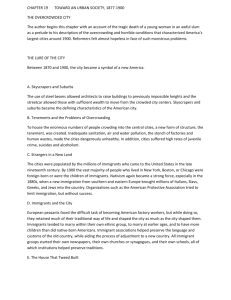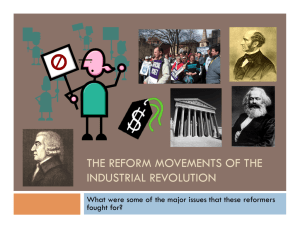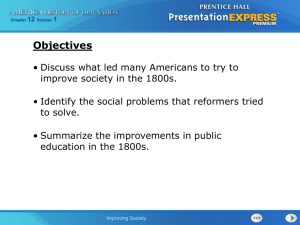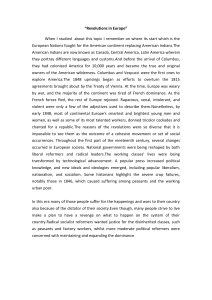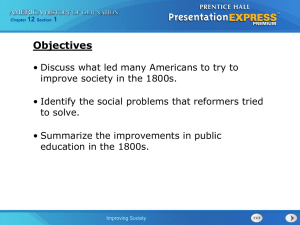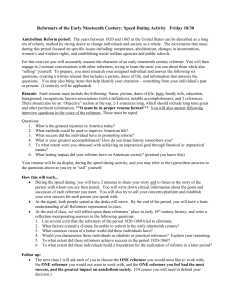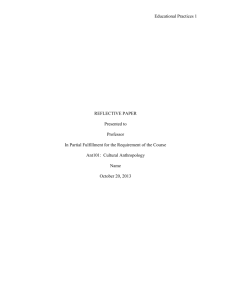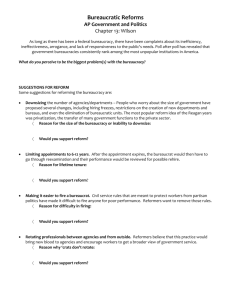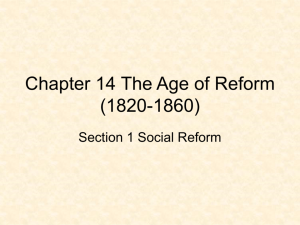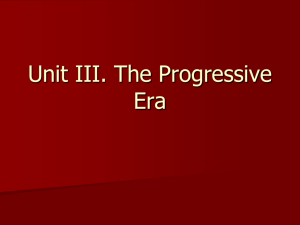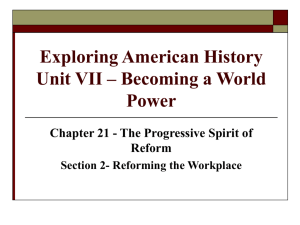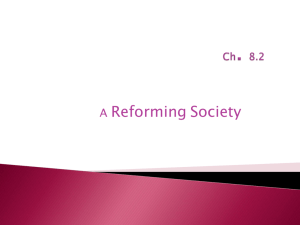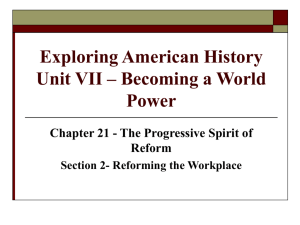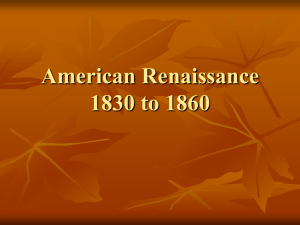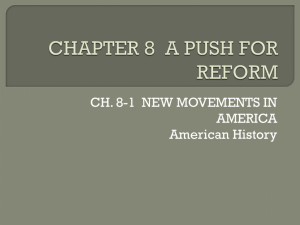Child Labor Reform - Edison High School
advertisement
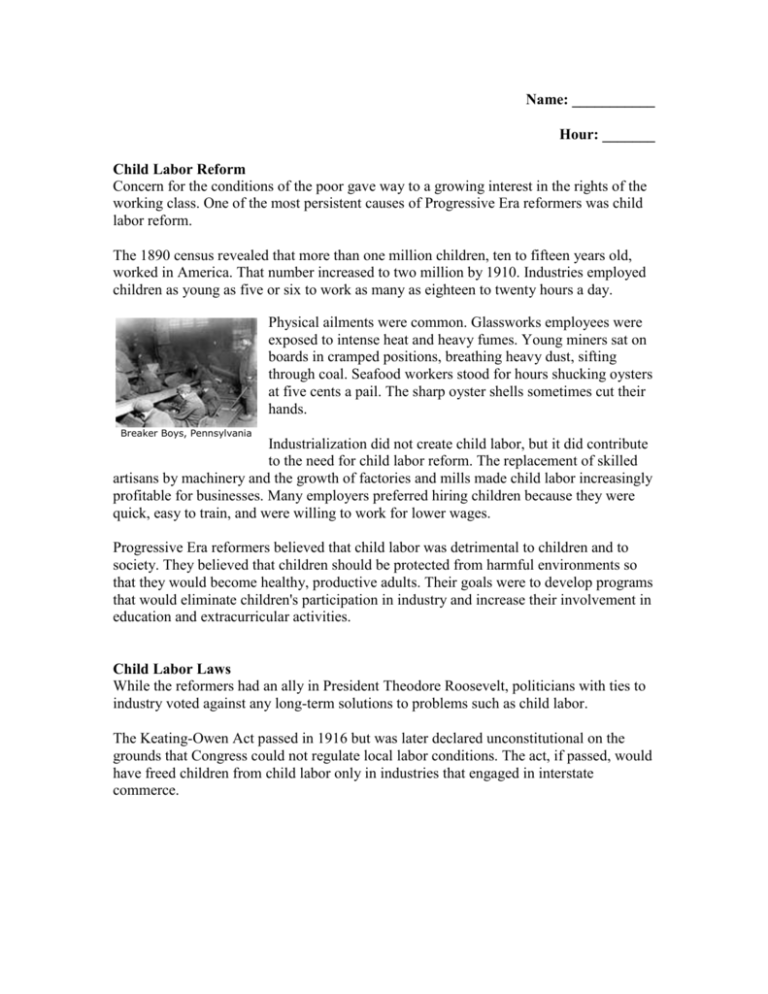
Name: ___________ Hour: _______ Child Labor Reform Concern for the conditions of the poor gave way to a growing interest in the rights of the working class. One of the most persistent causes of Progressive Era reformers was child labor reform. The 1890 census revealed that more than one million children, ten to fifteen years old, worked in America. That number increased to two million by 1910. Industries employed children as young as five or six to work as many as eighteen to twenty hours a day. Physical ailments were common. Glassworks employees were exposed to intense heat and heavy fumes. Young miners sat on boards in cramped positions, breathing heavy dust, sifting through coal. Seafood workers stood for hours shucking oysters at five cents a pail. The sharp oyster shells sometimes cut their hands. Breaker Boys, Pennsylvania Industrialization did not create child labor, but it did contribute to the need for child labor reform. The replacement of skilled artisans by machinery and the growth of factories and mills made child labor increasingly profitable for businesses. Many employers preferred hiring children because they were quick, easy to train, and were willing to work for lower wages. Progressive Era reformers believed that child labor was detrimental to children and to society. They believed that children should be protected from harmful environments so that they would become healthy, productive adults. Their goals were to develop programs that would eliminate children's participation in industry and increase their involvement in education and extracurricular activities. Child Labor Laws While the reformers had an ally in President Theodore Roosevelt, politicians with ties to industry voted against any long-term solutions to problems such as child labor. The Keating-Owen Act passed in 1916 but was later declared unconstitutional on the grounds that Congress could not regulate local labor conditions. The act, if passed, would have freed children from child labor only in industries that engaged in interstate commerce. In 1919 President Woodrow Wilson approved and signed into law the "Tax on Employment of Child Labor." This placed a ten percent tax on net profits of businesses that employed children under age fourteen or made them work more than eight hours a day, six days a week. The Supreme Court declared this law unconstitutional. Yet the initial passage of the bills may have had some effect on businesses, as the number of working children between ages ten and fifteen declined by almost fifty percent between 1910 and 1920. Boy Lost Arm Running Saw in Box Factory There was still a great deal of opposition to a national amendment against child labor. Opponents labeled the proposed amendment a communist idea that would control the nation's businesses. The Smith-Hughes Act, passed in 1917, provided one million dollars to states that agreed to improve their public schools by providing vocational education programs. The National Child Labor Committee and other organizations believed that these programs would offer children an alternative to work. By 1929 every state had a provision banning children under fourteen from working. Thirty-six states had laws that prohibited factory workers under sixteen from working at night or for more than eight hours a day. In February 1941 the Supreme Court overruled the 1918 decision against the KeatingOwen Act. As a result, businesses that shipped goods out of state had to abide by the ruling that children could only work outside of school hours and that children under eighteen were unable to work in jobs that were hazardous to their health. Reading Questions 1. Why were children hired? 2. Why was employing children considered dangerous? 4. Why did parents allow their children to work? 5. How did progressives feel about child labor?

